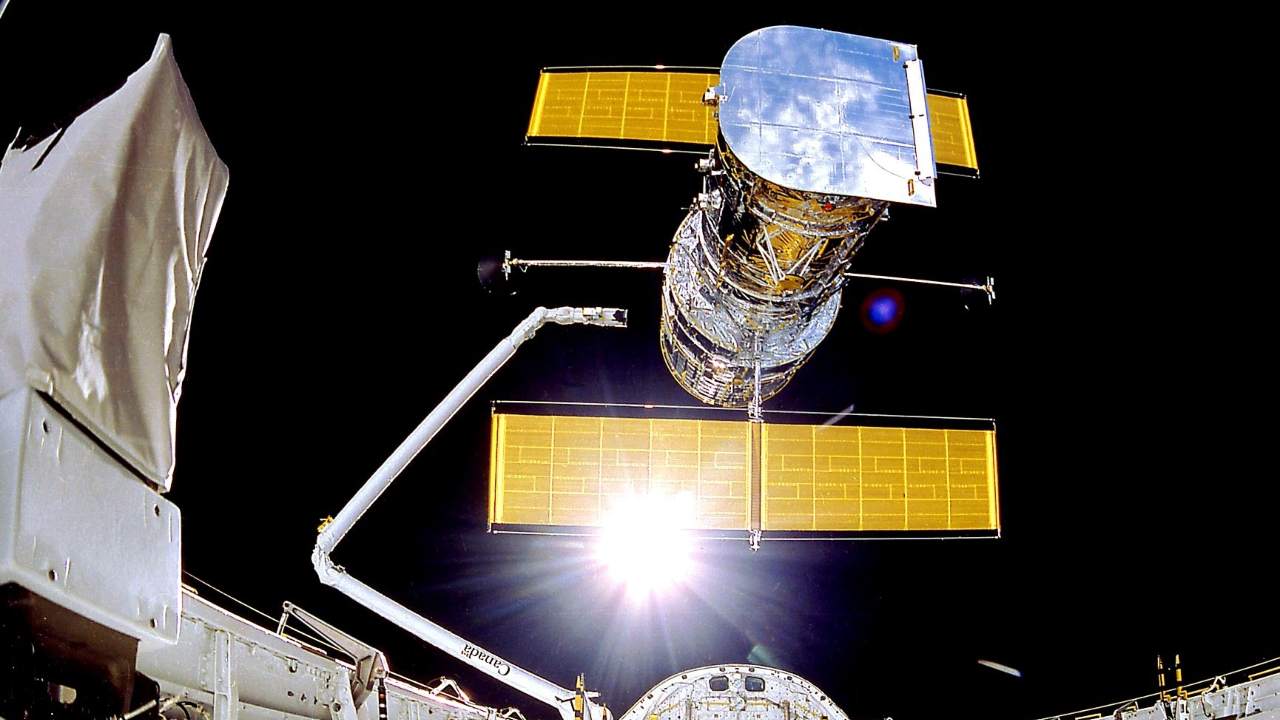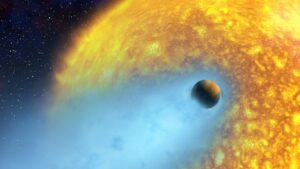FP TrendingJul 21, 2021 10:48:03 IST
After almost a month of being inoperative, NASA has finally managed to restart the science instruments on the Hubble Space Telescope on 17 July. The telescope is now back to operational status and the space telescope has also shared pictures of unusual galaxies as proof that it is working.

The Hubble Space Telescope is deployed on April 25, 1990 from the space shuttle Discovery. Avoiding distortions of the atmosphere, Hubble has an unobstructed view peering to planets, stars and galaxies, some more than 13.4 billion light years away.
Credits: NASA/Smithsonian Institution/Lockheed Corporation
Reacting to the development, Bill Nelson, NASA Administrator said that he is thrilled to see that the eye of Hubble is back on the universe. Insisting that the team is responsible for Hubbles’ success, Nelson added that the space telescope has completed its 32nd year performing space exploration, as mentioned in a NASA blog.
“Hubble is an icon, giving us incredible insight into the cosmos over the past three decades,” he added. “I’m proud of the Hubble team, from current members to Hubble alumni who stepped in to lend their support and expertise.”
The issue
Almost a month ago, on 13 June, the payload computer of Hubble halted. This is responsible for controlling and coordinating the science instruments onboard. The science instruments on Hubble were put in safe mode after the main computer could not receive a signal from the payload computer.
While the specialists were analysing the situation, the Hubble telescope could not perform missions. In order to repair the telescope, the Hubble alumni team returned to help the current team.
Speaking about the situation, Hubble systems anomaly response manager Nzinga Tull said that the benefit of programs that have been running for over three decades is that there is an incredible amount of experience and expertise. Tull added that the experience has been humbling and inspiring.
Both the old and the new team together discovered that the problem was with the Power Control Unit. Late at night on 15 July, the efforts of the team were successful and from 17 July, the Hubble telescope was made operational once again.
Not the first time
Back in 2008, the Hubble team has to rely on backup equipment and made a similar transition to return Hubble to regular operations after a component of the Science Instrument and Command & Data Handling unit failed. During Hubble’s final servicing mission in 2009, they replaced the complete equipment and significantly prolonged its life.
“Hubble is in good hands. The Hubble team has once again shown its resiliency and prowess in addressing the inevitable anomalies that arise from operating the world’s most famous telescope in the harshness of space,” said Kenneth Sembach, director of the Space Telescope Science Institute (STScI) in Baltimore, Maryland, which conducts Hubble science operations.
![These images, from a program led by Julianne Dalcanton of the University of Washington in Seattle, demonstrate Hubble's return to full science operations. [Left] ARP-MADORE2115-273 is a rarely observed example of a pair of interacting galaxies in the southern hemisphere. [Right] ARP-MADORE0002-503 is a large spiral galaxy with unusual, extended spiral arms. While most disk galaxies have an even number of spiral arms, this one has three. Credits: Science: NASA, ESA, STScI, Julianne Dalcanton (UW) Image processing: Alyssa Pagan (STScI)](http://images.firstpost.com/wp-content/uploads/2021/07/stsci-01faxk0ed0mvrj76p55cbb66rh.jpg)
These images, from a program led by Julianne Dalcanton of the University of Washington in Seattle, demonstrate Hubble’s return to full science operations. [Left] ARP-MADORE2115-273 is a rarely observed example of a pair of interacting galaxies in the southern hemisphere. [Right] ARP-MADORE0002-503 is a large spiral galaxy with unusual, extended spiral arms. While most disk galaxies have an even number of spiral arms, this one has three.
Credits: Science: NASA, ESA, STScI, Julianne Dalcanton (UW) Image processing: Alyssa Pagan (STScI)
Back to work
On 19 July, Hubble shared new images from space. It shared two images of galaxies – one with spiral arms and the other shows a pair of colliding galaxies. Other targets for the telescope were globular star clusters and aurorae on the giant planet Jupiter. These images were obtained from a program conducted at the University of Washington, Seattle by Julianne Dalcanton.
Keeping a watch on the night skies for over 31 years, NASA believes that Hubble will continue to do its work for “many more years and will continue making groundbreaking observations.” Data from Hubble has been used to publish over 18,000 scientific papers and has taken over 1.5 million observations of the universe. The team believes that Hubble will continue to work on new discoveries along with its other telescopes including the James Webb Telescope that will soon launch.










